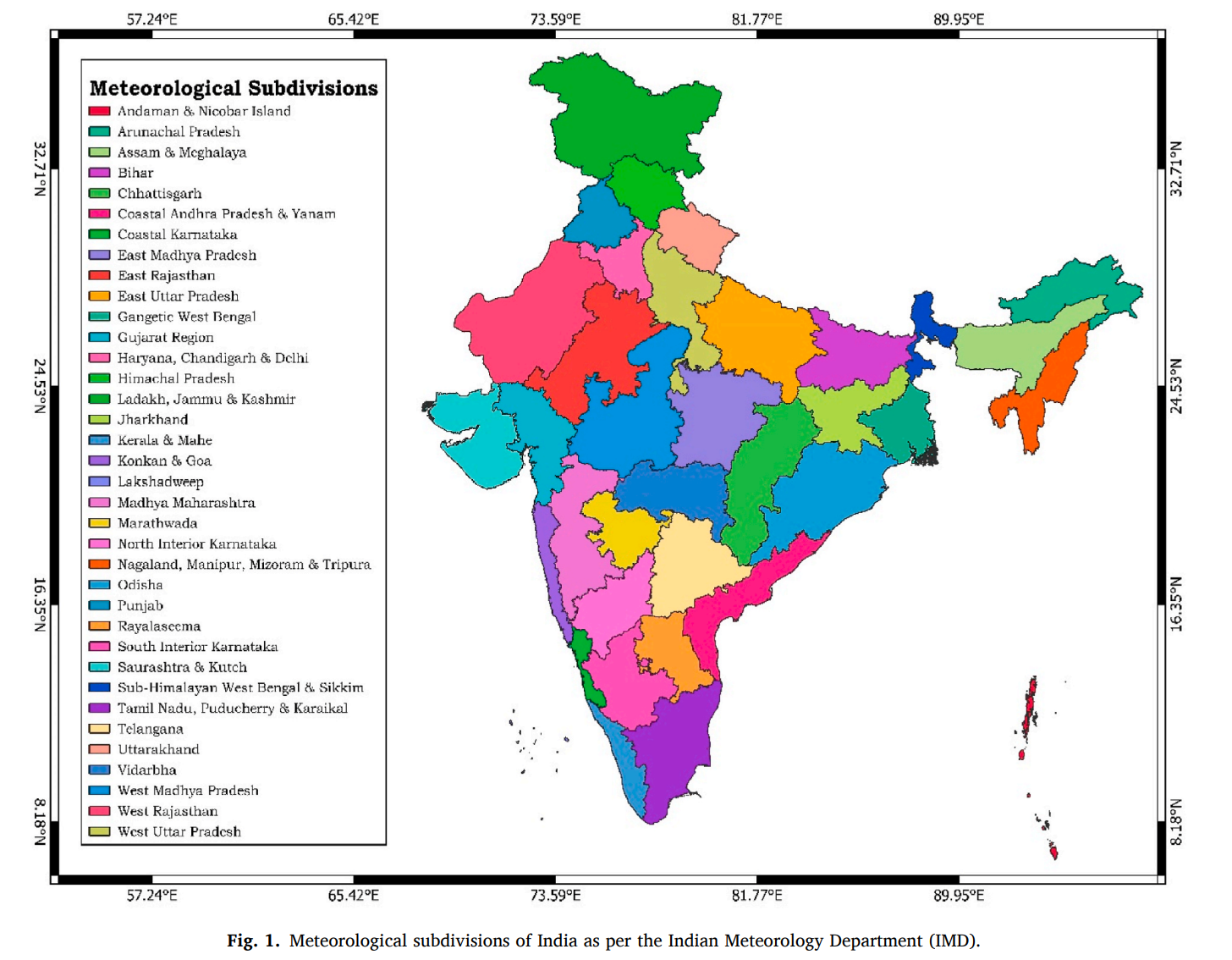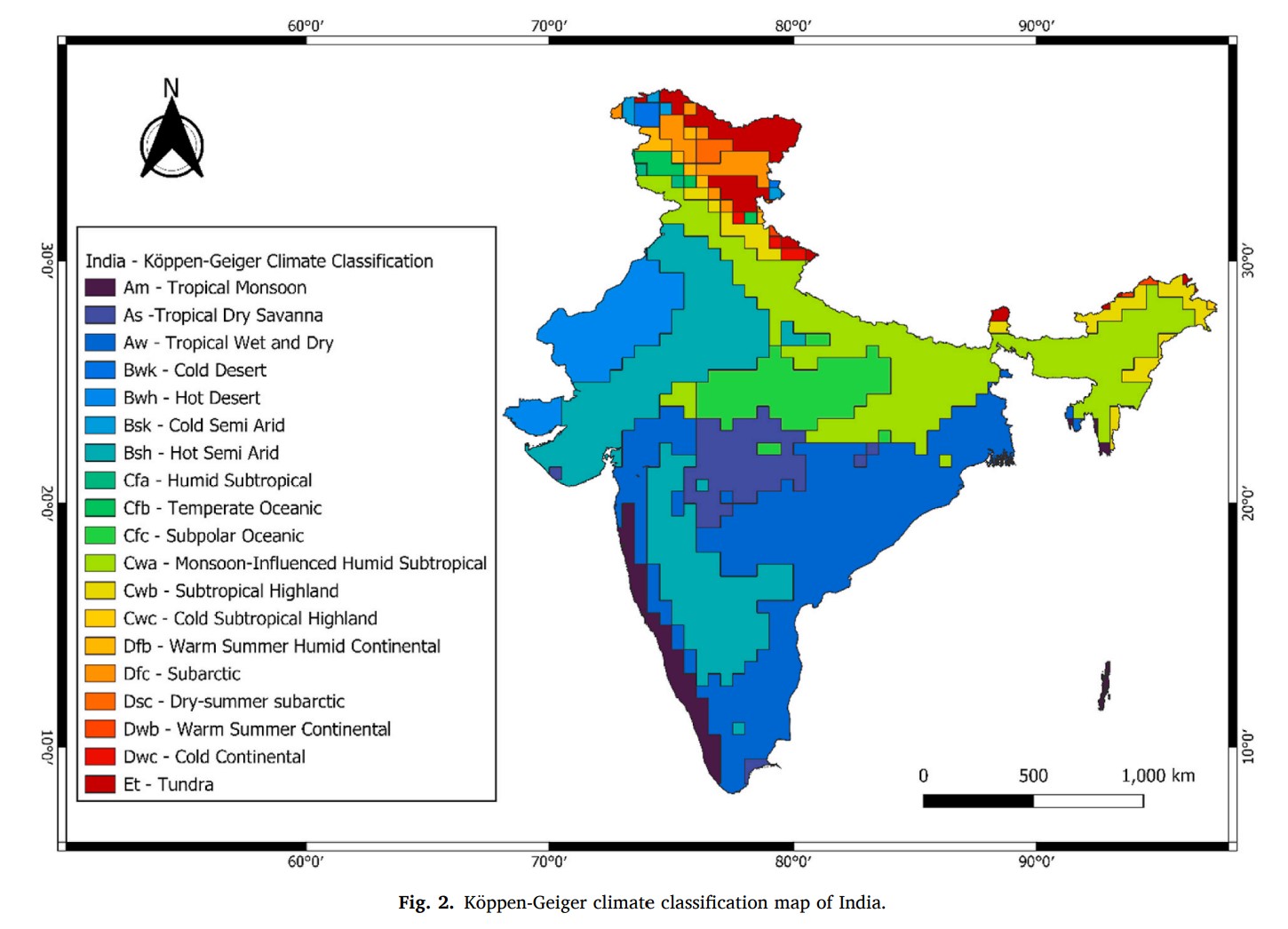
India is in the hot seat as heat conditions are predicted to persist in East and south peninsular India in the days to come. This year is witnessing record breaking temperatures in many parts of India and the IMD has predicted that 2024 will be the hottest year on record for the country.
Industrialisation and urbanisation are contributing to frequent, prolonged and intense heatwaves in India where changes in land cover and land use mainly in urban areas has increased both Land Surface Temperature (LST) and air temperatures and subsequently affected the surface climate.
Between 1901 and 2018, India’s average annual temperature has increased by about 0.7 ◦C and the country is facing new temperature-breaking records, where 2016 and 2020 have been the hottest years in the last century informs this paper titled 'Temperature projections and heatwave attribution scenarios over India: A systematic review' published in the journal Heliyon.
States which have not experienced heatwaves in the past, such as Himachal Pradesh and Kerala, are now exhibiting a higher frequency of extreme temperatures. As per the National Disaster Management Authority (NDMA), 24,223 fatalities were attributed to heatwave-related deaths spanning from 1992 to 2015. In March 2022, intense heatwaves caused temperatures to climb above 40 ◦C in numerous Indian cities.
High temperatures can lead to long-lasting damage to human organs and exacerbate pre-existing comorbid conditions, including dehydration, kidney and heart problems, and mental health issues. The rising temperature could increase water scarcity in some regions, as well as cause forest fires and urban fires in some leading to air pollution.
This paper examines the dynamics of heatwave projections over the different regions of India and ongoing efforts to build resilience for climate related hazards.
What is a heat wave?
A heat wave is generally defined as a prolonged period of excessively hot weather.
A heat wave is declared by India Meteorological Department (IMD) when:
- Based on departure from normal temperature, if maximum temperature of a station reaches at least 40°C or more for the plains and at least 30°C or more for hilly regions, the station is declared to be experiencing a heat wave.
- When the departure from normal is 4.5°C to 6.4°C, this is described as a normal heat wave while when the departure from normal is >6.4° C, it is declared as an extreme heat wave.
- Based on actual maximum temperature, a heat wave is declared when the actual maximum temperature is ≥ 45°C while a severe heat wave is declared when the actual maximum temperature is ≥47
- If above criteria meet at least in 2 stations in a meteorological sub-division for at least two consecutive days then a heat wave is declared on the second day.
- For heat waves for coastal stations in India, when maximum temperature departure is 4.5°C or more from normal, heat wave may be declared provided actual maximum temperature is 37°C or more.
The peak month of the heat wave over India is May. Heat waves occur over plains of northwest India, Central, East & north Peninsular India during March to June and cover Punjab, Haryana, Delhi, Uttar Pradesh, Bihar, Jharkhand, West Bengal, Odisha, Madhya Pradesh, Rajasthan, Gujarat, parts of Maharashtra & Karnataka, Andhra Pradesh, Telengana and at times Tamilnadu and Kerala.

IMD has a network of surface observatories over the country that measure various meteorological parameters like temperature, relative humidity, pressure, wind speed & direction etc. The data is regularly monitored and predictions are made based on this information.
As per the IMD report, the decade 2001–2010 has been recorded as India’s hottest decade, with an anomaly of 0.4 ◦C, surpassing the previous decade, i.e., 1991–2000, by 0.2 ◦C. The years 2015 and 2019 had the most prolonged heatwaves in India, with more than 40 ◦C daily maximum temperatures persisting for a month or around 45 days, depending on the location.
Why is India vulnerable?
- India’s tropical and subtropical location
India ranks among the most vulnerable to heatwaves due to its location in tropical and subtropical regions. The Koppen ¨ Geiger classification system classifies India into the - tropical wet climate zones found in parts of western and northeastern India which receive heavy rainfall during the monsoon season; the tropical wet and dry climates found in interior parts of the Deccan plateau and western India which have a more pronounced dry season; the semi-arid steppe climate zones found in west-central India; the temperate climates found in the Himalayan north where there are temperate warm and cool summers; the alpine tundra climate found in the higher Himalayan regions; the arid desert climate dominating the western Thar desert regions along the India-Pakistan border and the tropical monsoon climate found along the southwest coast, southern Deccan plateau and Northeastern states, which receive heavy monsoon rainfall.

The Bay of Bengal and the Arabian Sea influence heatwave formation with their warm sea surface temperatures. This can exacerbate the effects of heatwaves, leading to higher temperatures and humidity. Atmospheric patterns also play a role in heatwave formation and persistence in the region, interacting with factors like soil moisture and clear skies to amplify their effects.
- Anti-cyclones in western India
Rapid intensification of the subtropical anti-cyclone in the Arabian Sea, which repels monsoon flows, slows the monsoon’s advance, significantly impacts heatwaves in India.
- Rising temperatures in the Indian Ocean
The warming of the Indian Ocean has been substantial since the turn of the millennium. Researchers have found a possible link between El Nino ˜ events, Indian Ocean sea surface temperature (SST) anomalies and heatwaves in India.
- Absence of periodic rainfall
Since 1970, several regions of India have seen a significant decrease in precipitation during the monsoon, which has possibly led to increase in heatwaves in the region.
- Influence of absorbing aerosols on heatwaves:
Recent evidence have revealed the influences of aerosols, particularly those of absorbing nature, on high-temperature extremes, on both climate and heatwave time scales over India.
- Aggressive urbanisation and industrialisation are taking their toll
Aggressive urbanisation along with land use changes, massive loss of green cover, destruction of water bodies,, rampant concretisation, growth of high rise concretised buildings, unsustainable developmental projects and plans in urban areas are further adding fuel to fire and worsening the situation in India. Unsustainable agricultural practices such as fuel burning in rural areas also adding to the effect.
Impacts of heatwaves
Heatwaves can affect health by reducing comfort levels and affecting the Quality Of Life (QOL) along with cramps, dehydration, fatigue and heatstroke. Rising temperatures can significantly increase severe gastroenteritis and food poisoning cases due to spoilage of foods. Heatwaves have also been found to be associated with nervousness, palpitations, anxiety, chronic cardiovascular and respiratory diseases, and behavioural changes.
In recent years, the National Disaster Management Authority (NDMA) has acknowledged the rising trend of heatwaves in India. Indian states have established Heat Action Plans (HAPs) that involve measures like early warning systems, public awareness campaigns, capacity building of health professionals, and reducing heat exposure for vulnerable groups.
What is being done and needs to be done
India has implemented various strategic policies and initiatives such as National Clean Air Programme (NCAP), National Action Plan on Climate Change (NAPCC), Nagar Van Scheme, Swachh Bharat Abhiyan, and A Green India for all to reduce greenhouse gases and other air pollutants emissions.
The NDMA has developed a National Disaster Management Plan and Policy, which provides frameworks for heatwave mitigation through early warnings, awareness generation, and coordination among agencies for emergency response.
- Adaptive planning needed
However, India needs adaptive planning to achieve these ambitious targets provided under these initiatives to reduce the temperature and severe impacts of heatwaves. India lacks a comprehensive plan and strategy to mitigate the adverse effects of climate change, heatwaves and related illnesses that are influenced by a range of biological, social, medical, environmental, and geographical factors.
Estimation of local temperature thresholds, developing region-specific criteria for heatwaves and implementing comprehensive strategies to combat climate change and UHI effects are essential to mitigate the risks associated with extreme heat.
- Promotion of climate sensitive practices essential
Reducing individual carbon footprints, as highlighted in the Lifestyle for Environment (LiFE) initiative by the Indian Government is needed. Promoting climate-sensitive rural habitations, local ecofriendly architectural practices involving thatched rooftops and shaded exterior living spaces, should be encouraged to maintain thermal homeostasis.
Restoration of water bodies, scaling up of irrigation infrastructure in rural areas can minimise heat strain on farming communities. In urban areas, retaining the green cover and green spaces and protecting water bodies would aid in localised mitigation by providing evaporative cooling and radiation shading. Mandatory cool roof provisioning for new buildings and retrofitting existing structures with reflective materials coupled with bioclimatic architecture and passive cooling techniques can help reduce heat stress in cities.
- Establishing early warning systems is important
Early warning systems utilising multiple communication channels can greatly help in reducing the risks faced by vulnerable communities.
- Upgrading medical infrastructure crucial
Community health workers and rural healthcare system capacity building for identification, treatment, and emergency management of heat illnesses is very important. There is also an immediate need to upgrade the medical infrastructure and facilities to reduce mortality from heat strokes. This requires expanding access to healthcare facilities, investing in heat-specific emergency preparedness, and training medical professionals to recognise and treat heat-related conditions.
- Planning ahead
Preventing high-risk outdoor occupational and educational activities along with community involvement in informing vulnerable populations on preventive measures; including subsidised cooling devices and optimising emergency readiness, can greatly help to ensure the goal of ‘zero heatwave deaths’, argues the paper.
/articles/india-boils-heat-soars